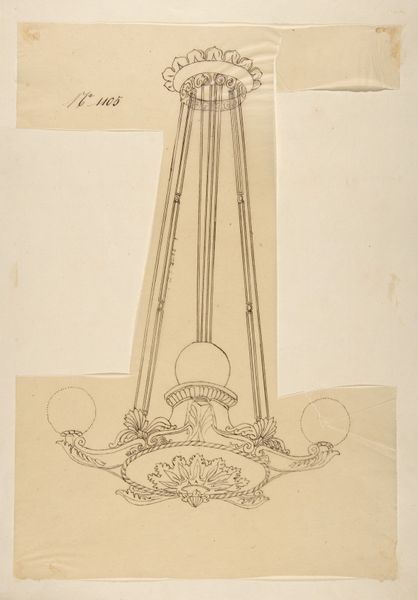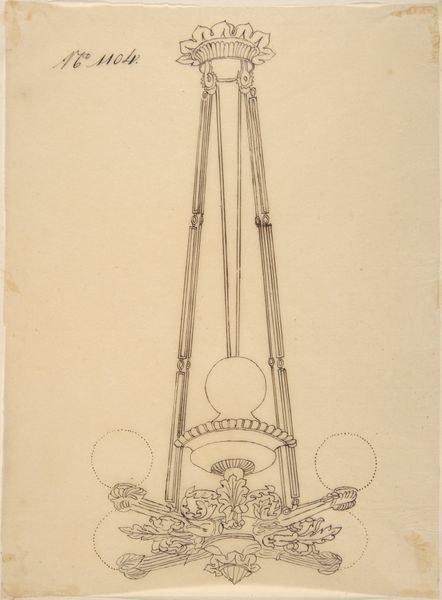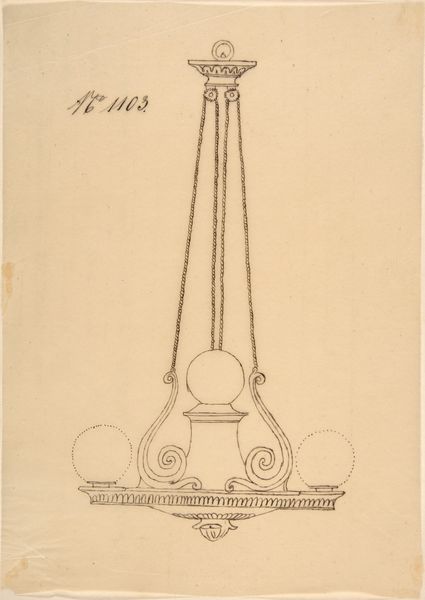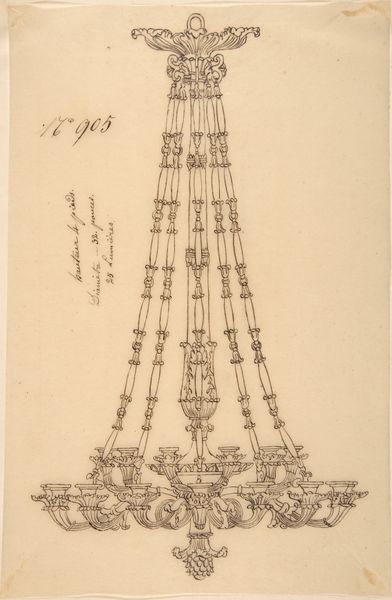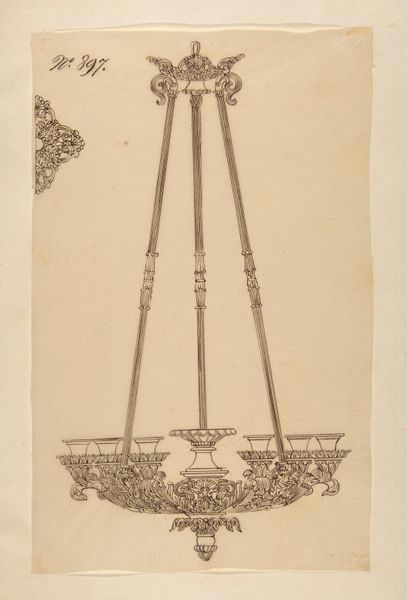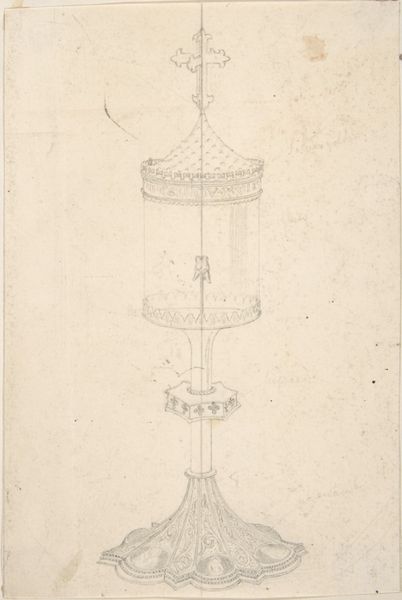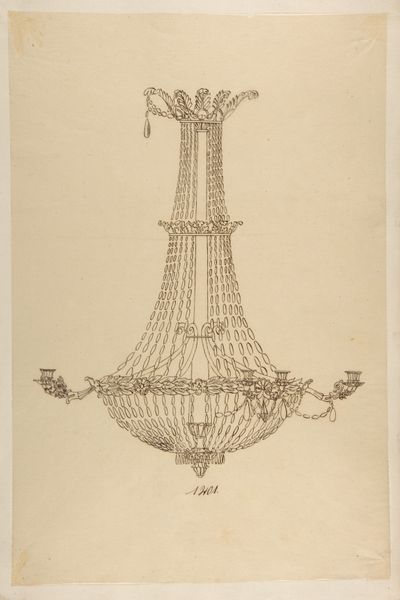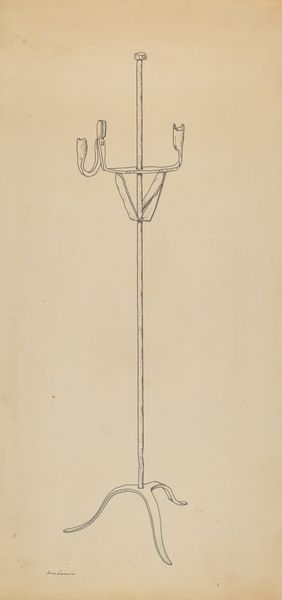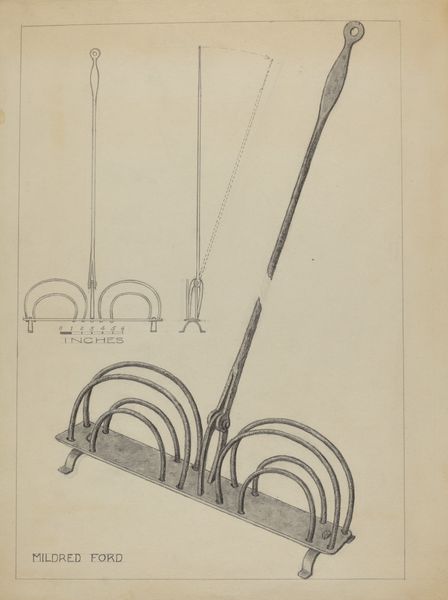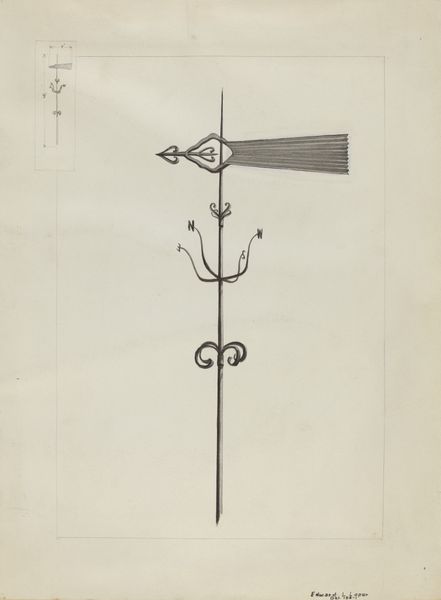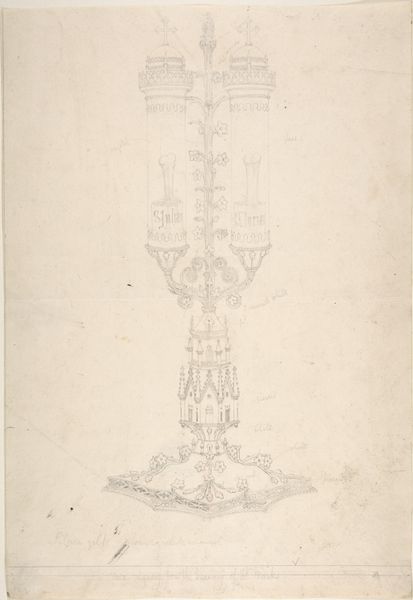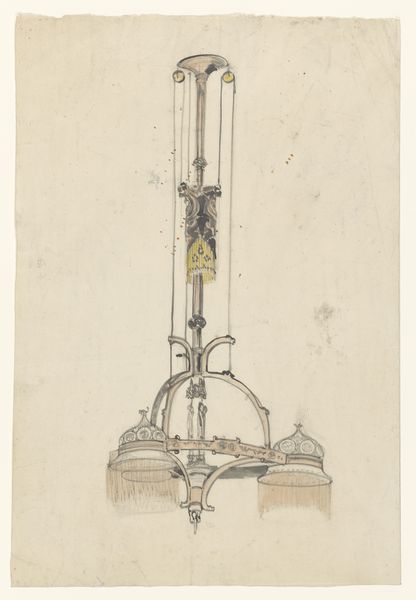
drawing, print
#
drawing
# print
#
pen sketch
#
etching
#
line
#
decorative-art
Dimensions: sheet: 10 1/4 x 7 15/16 in. (26.1 x 20.1 cm)
Copyright: Public Domain
Editor: This is a 19th-century pen and ink drawing, "Design for a Chandelier" by an anonymous artist, housed at the Met. It's a very precise, linear design. What strikes me most is the intricate floral detail on the bottom juxtaposed against the simple geometric lines above. What can you tell me about this work? Curator: I see in this drawing the very hand of labor. This wasn't just the whim of a designer; this represents countless hours of skilled craftspeople potentially bringing this to life. Note the use of line - precise, calculated to give shape, shadow, and guide the artisans in realizing the design. Editor: So you're less focused on the aesthetic and more on the production? Curator: Exactly. Consider where this chandelier *would* have hung: probably in a home furnished with the profits of industry. It masks labor under this facade of luxury. That etching allows for the mass production and distribution of ideas. So it's not only design but about creating reproducible imagery that might drive tastes across the socio-economic spectrum. Look closely - can you tell me about what material compromises it appears to indicate? Editor: Well, based on the sketch and period, it would probably involve some kind of cast metal like bronze or brass, plus glass for the globes and possibly some sort of decorative enamel or paint. Curator: And how might these materials have been sourced? The metals would have come from mines and been refined by laborers in often dangerous conditions. These historical economic processes shaped decorative-art forms in unique ways. What is more the availability of materials influenced the production. Editor: That's a fascinating perspective. I tend to see the artistic intent, but I understand that art doesn't exist in a vacuum; it is tied to broader economic and social systems that gave artists constraints but equally defined new possibilities. Curator: Precisely! And how tastes get formed when materials themselves can be manipulated to form the desire itself.
Comments
No comments
Be the first to comment and join the conversation on the ultimate creative platform.
